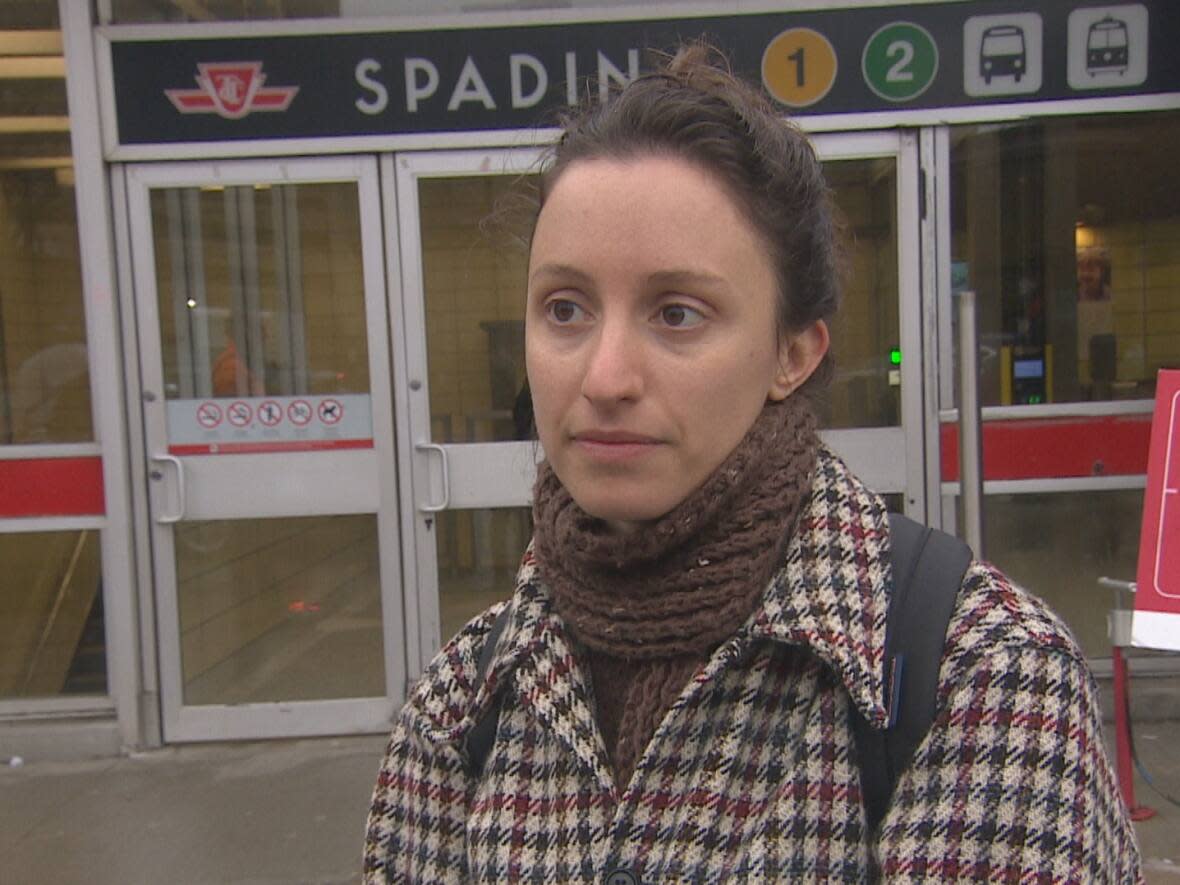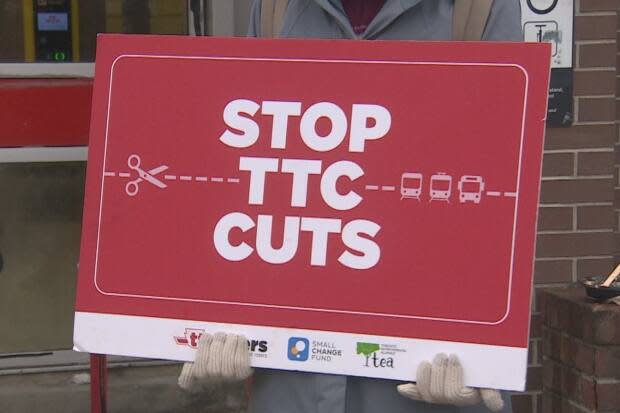Transit advocates protest TTC service cuts outside subway stations in 'day of action'

Transit advocates held a "day of action" on Monday to protest TTC service cuts that are resulting in longer wait times for certain buses, streetcars and subway trains.
Members of TTCriders, a volunteer-led organization of transit riders, stationed themselves outside 18 transit stops — including 13 subway stations — during the morning and evening commutes. Flyers handed out by volunteers let transit users know about the changes to 39 routes that took effect on Sunday.
The TTC service changes impact 36 bus routes, two subway routes and one streetcar route. Twenty per cent of all TTC routes have been adjusted. While the cuts mean some routes will have both longer and shorter wait times during the day, 15 routes will see longer wait times only.
Monica Mason, co-ordinator of the advocacy group, TTCriders, said the cuts will largely impact low income people, racialized people, women and shift workers. The service cuts affect marginalized areas of Toronto that rely on transit to get around, she added.
"These cuts are going to mean you might be late for work or for school. You might not have access to services you need to access," Mason said.
Mason said the cuts will not improve safety on the TTC. For example, people who take Line 2 weekday evenings will have to wait up to eight minutes for a train. That means waiting alone on a platform at night — a situation that is not safe for women, she said.
"Service cuts do mean less safety," Mason said.
"We need to reverse these service cuts and fund public transit. Anytime that we invest in our public transit system in support of solutions — having more staff on the platform, adding more frequent service — it contributes to safety."
The flyers let transit users know how much longer they will be waiting for specific buses, subways or streetcars. They also encourage people to phone Prime Minister Justin Trudeau and Ontario Premier Doug Ford to urge them to provide the TTC with more funding.
"Paying more for less service isn't fair," the flyers read. "The next Mayor of Toronto should be a transit champion and reverse service cuts."
You can read which routes will be affected on this TTC webpage.

According to the TTC, 80 per cent of its routes remain unchanged and the service cuts mainly affect slower, less busy routes.
"When you look at service to ridership, we are actually doing very, very well," Stuart Green, TTC spokesperson, said in an interview on Monday.
TTC says decisions made with transit equity in mind
The TTC has said it made tough decisions about service cuts with transit equity in mind.
"We absolutely understand that our customers want reliable and frequent service, which is why we've committed to protecting service on the busiest routes at the busiest times of day, particularly in priority neighbourhoods where we know people are more reliant on transit. And we are doing that in a balanced and equitable way across the entire city," the TTC has said.
A new report by Toronto Metropolitan University, however, says the service cuts will likely have the greatest impact on Toronto's most marginalized neighbourhoods.
The report, 2023 TTC Service Changes and Transit Equity in Toronto, released last week, says the majority of routes that will see cuts of 10 per cent or more in service frequency and reliability run through marginalized areas.
Marginalized communities include people with lower income, people precariously employed, new immigrants, older and younger people who rely on public transit to get around, and people for whom public transit is not a choice.
"These neighbourhoods may not generate the highest amounts of public transit trips, but residents in these neighbourhoods may be more dependent on public transit for their everyday needs compared to other parts of the city," the report says.
"The proposed service changes by the TTC will likely make these neighbourhoods more mobility poor, creating additional barriers to the residents' participation in employment, education, and society in general."


